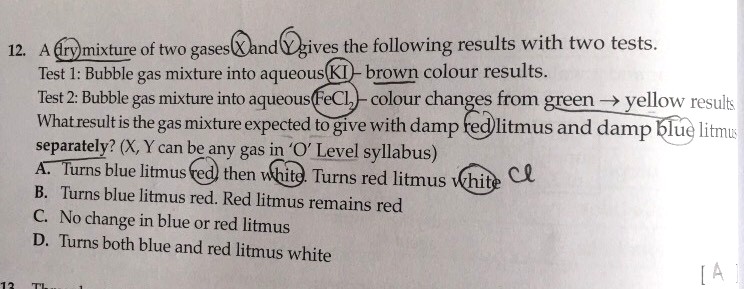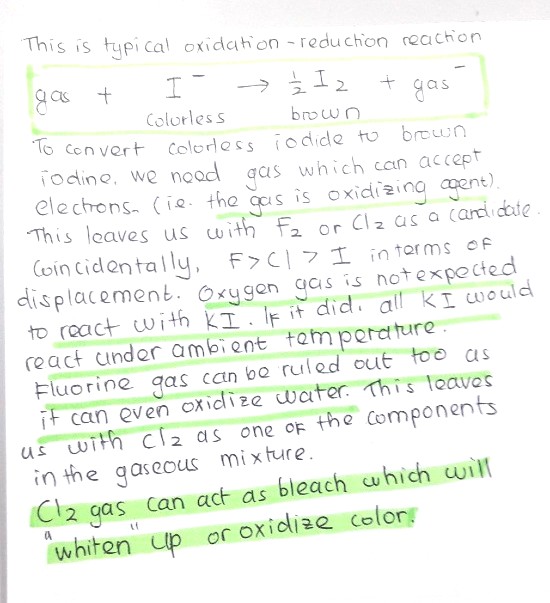Ask Singapore Homework?
Upload a photo of a Singapore homework and someone will email you the solution for free.

Question
primary 6 |
One Answer Below
Anyone can contribute an answer, even non-tutors.

PSLE Science - Please Explain why answer is A :)
Test 2 suggests that the gas mixture contains a strong oxidising agent to oxidise Fe(II) ions in aqueous FeCl2(green) to Fe(III) ions in FeCl3 (yellow, usually brownish yellow). Both chlorine and bromine are able to oxidise
Bromine gas forms hydrobromic acid (HBr) and hypobromous acid (HOBr) when dissolved in water. Similarly , chlorine gas forms hydrochloric acid (HCl) and hypochlorous acid (HOCl) when dissolved in water.
The hypobromous and hypochlorous acids partially dissociate to form H+ ions and the respective hypobromite and hypochlorite ions, which are oxdising agents.
Thus, when chlorine or bromine gas dissolves in the water of the damp litmus papers, the acidic solutions formed turns blue litmus red. The oxidising agents are responsible for turning the red litmus white ('bleaching')
See 1 Answer




